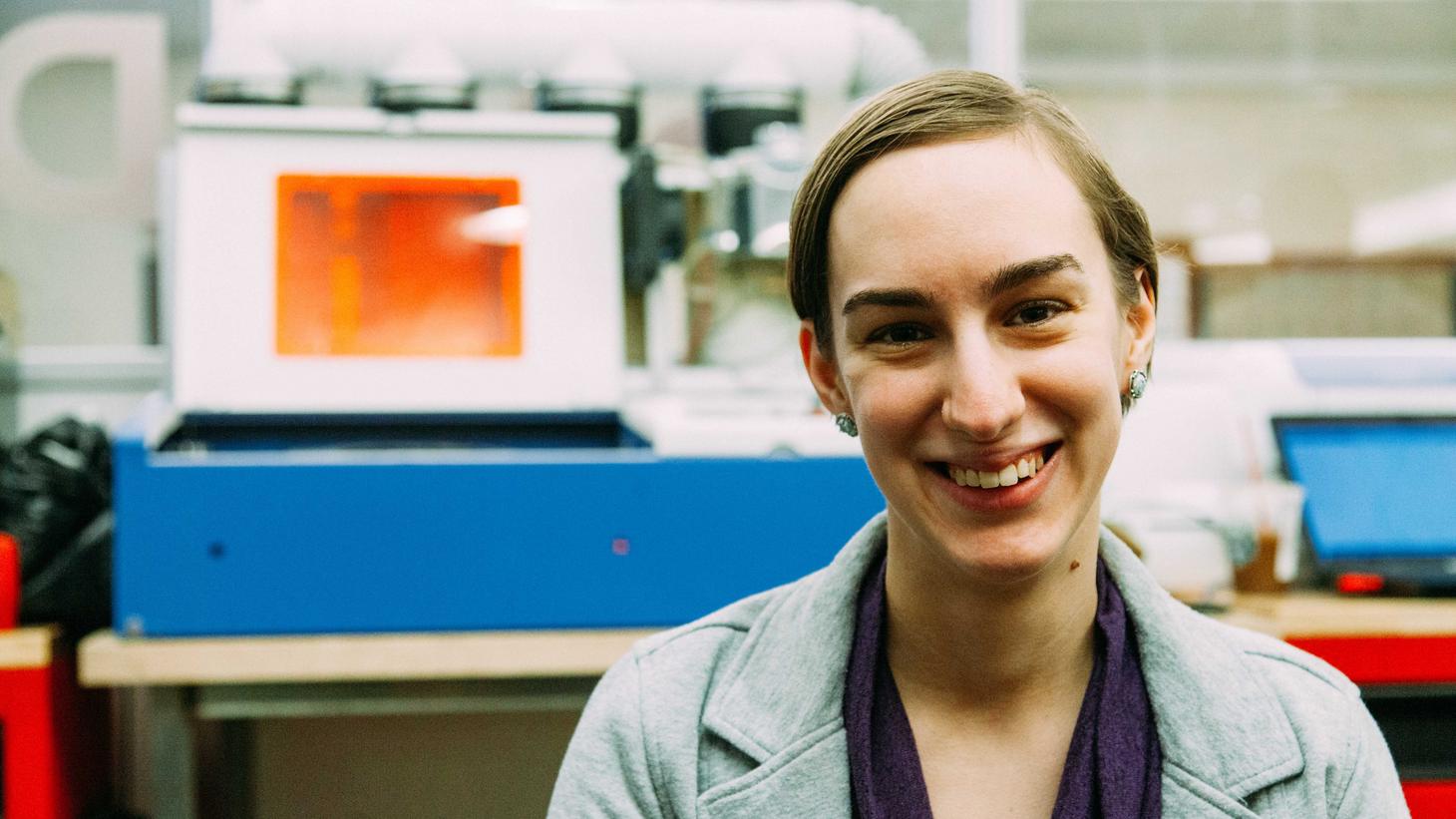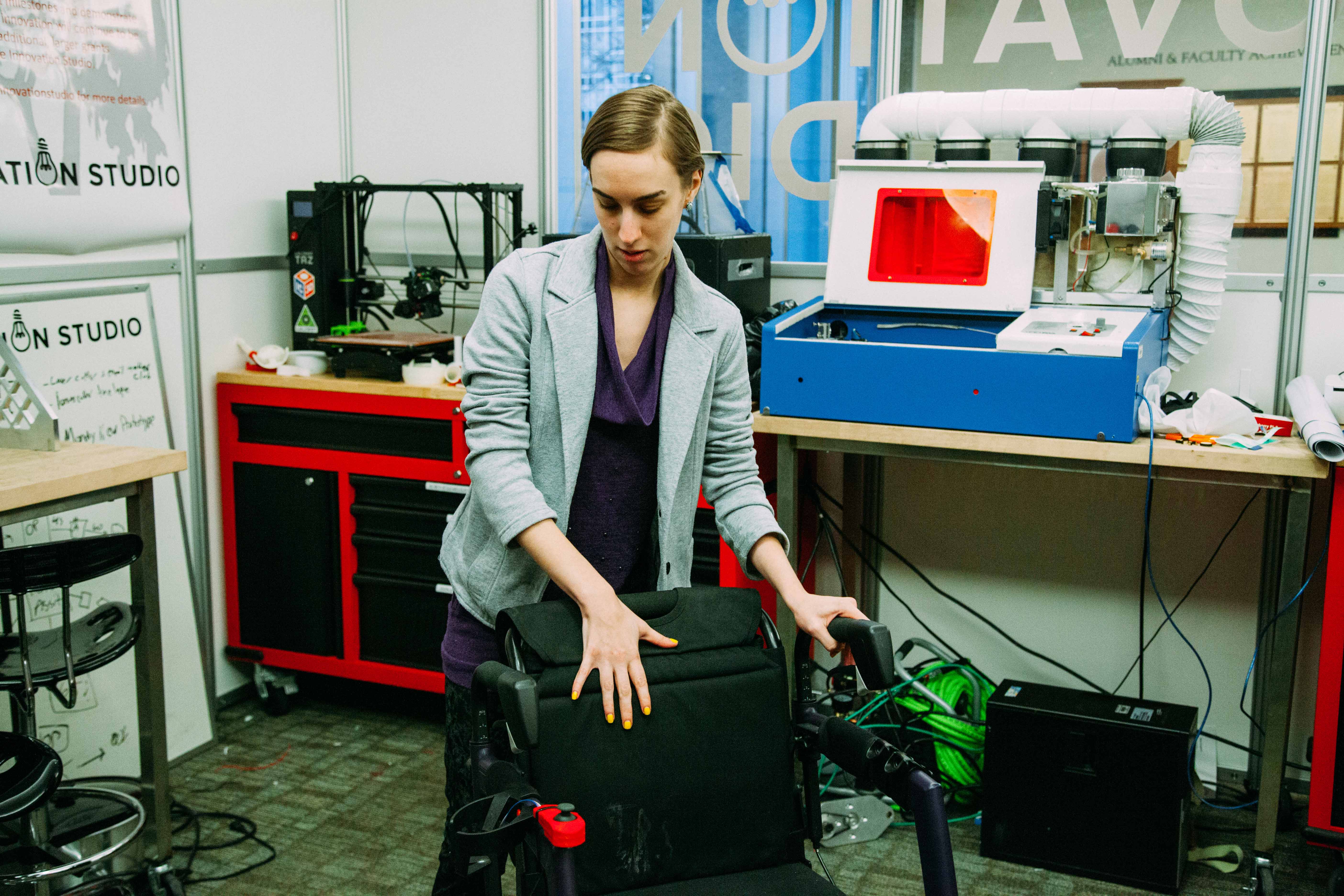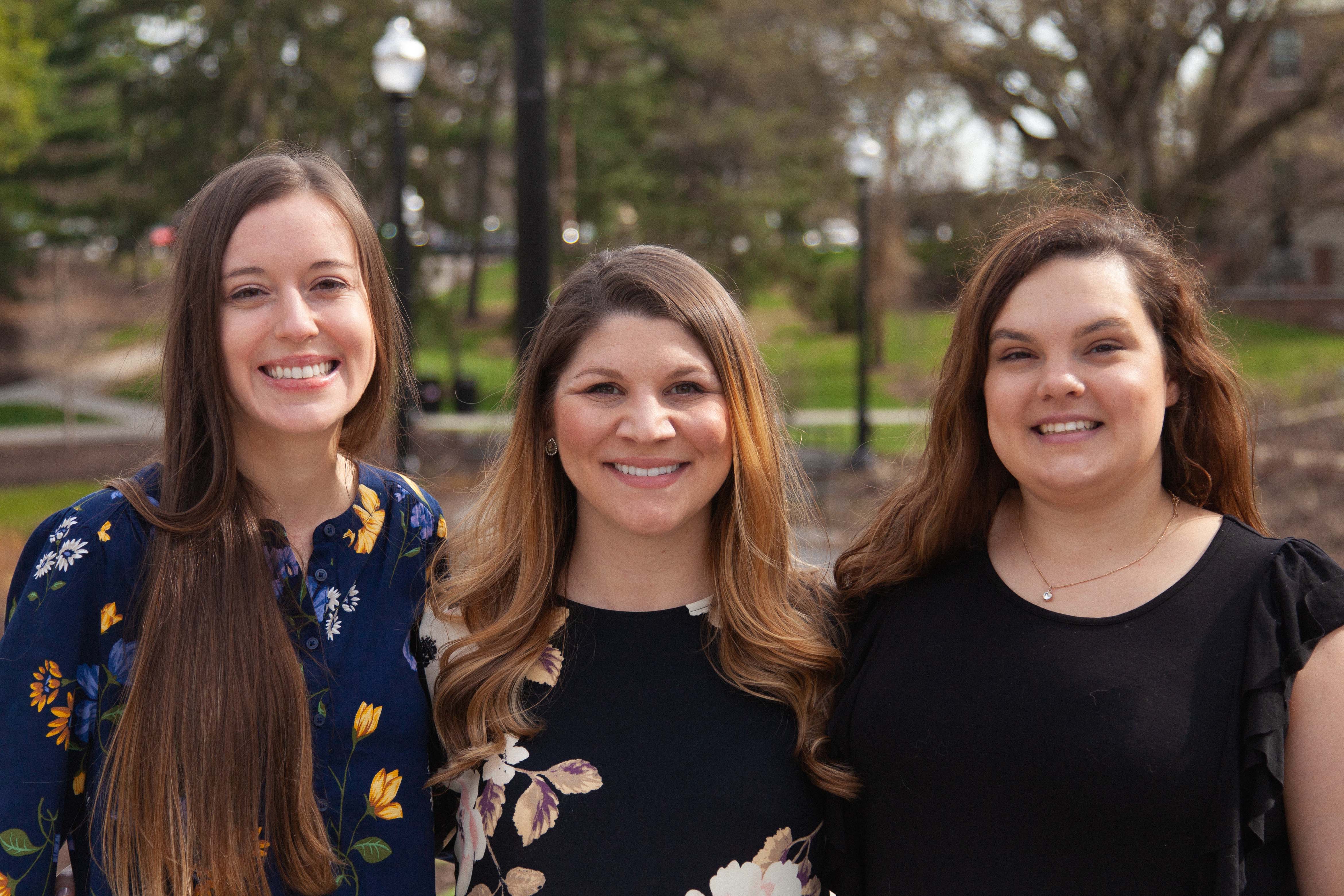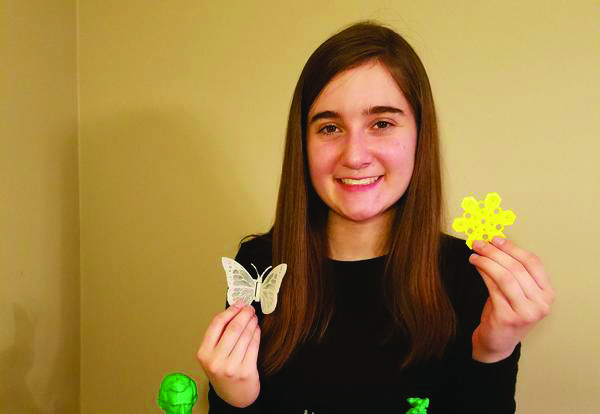
Hacking Health
Students from across the university tell us how the College of Nursing's Innovation Studio helped them innovate healthcare solutions
By Chelsea Schmitz and Ali Miller
Jen Schlegel is a senior at The Ohio State University majoring in Biomedical Engineering. Schlegel was born with cerebral palsy, a neuromuscular birth defect. After major medical event in college, she became a wheelchair user and lost most of her ability to write and use her hands. At a Medical Innovation Club meeting where she was discussing potential solutions to daily challenges she faces, another student encouraged her to pitch to the Innovation Studio. Since then, it’s been what she calls her “home base.”
Tell us about the projects you’re working on at the Innovation Studio.
I directly or indirectly work on about a half a dozen projects that involve three different student organizations. The project that is the furthest along is my motorized rollators. My mobility changes on a moment to moment basis. Some days my legs are stronger than my arms, some days my arms are stronger than my legs. I never know what I’m going to get into in any given day. I was in the studio with Josh, the shop manager, one day. We were talking about wheelchairs and rollators, and I said, “Why can’t we just stick a motor on this?” So, that’s what we have been working on.
At the end of the day, what I do at the Innovation Studio helps me hack my health. One of my advisors gets on me, like, “You always have so many projects.” And it’s true. I don’t know where my health is going to end up, so I want to make sure that I have the tools and the resources that I need to get to where I want to go. I would like to be a neurologist, but if I would like to be a neurologist, I need to first go build the tools that I need to use to be a neurologist. Because they don’t exist.

How has the Innovation Studio helped you personally and professionally?
For me, the studio has been incredible. I honestly wouldn’t be who I am now if I had not been connected with them last year. It has opened some incredible doors for me. I became an engineer, an inventor, a creator and an entrepreneur. A lot of the things that I built with them on a personal level have propelled me forward to other opportunities that I would have never gone for if I didn’t have the studio as a home base.
The studio also helped me grow so much as a professional. I’ve given them a half dozen pitches, so I know what the process is like. My confidence has grown. I had ideas for solutions, but did not know where to go to create them. The studio was the answer to that.
What’s your favorite part of the Innovation Studio?
It’s the validation. Everyone involved with the studio is so supportive. When you go into the studio, there is no such thing as a wrong or bad idea. For me, it is a comforting environment. I have been a lot of places early on in my college career where I told people I was an engineering student and they literally laughed at me. That has never been my experience with the studio. It’s a supportive community.
Three nursing students team up to fight teen suicide

When Brooke Rengers, MPH, RN, WHNP, Katherine Baruk, RN, FNP, and Alexandra Schoonover, RN, PMHNP, were tasked with creating a team project for their community health nursing course in the graduate entry nursing program, they knew what issue they wanted to address: teen suicide. Impressed by their work, Instructor Julia (Judy) Donegan, MS, RN, APHN-BC, urged them to turn their project into a reality.
Tell us about your project.
It’s a course consisting of five core modules: mental health overview, stress and resilience, identity and role models, self-esteem, and social relationships. Each interactive module includes a description of the core topic, embedded links for additional information and resources on the web, surveys, quizzes, games, educational videos and a learning assessment. The modules can be integrated in many settings (i.e., schools, community, health centers).
What outcomes are you are hoping to achieve?
Suicide is the second leading cause of death in the adolescent population. Ultimately, the project aims to increase mental health treatment and decrease suicide rates among adolescents in the community by increasing awareness of mental illness, reducing stigma surrounding the topic, and providing access to help resources. Through the utilization of modern technology, mainstream videos and interactive modules, we hope that this course will not only shine light on mental health, but also provide resources to individuals seeking help.
How did the Innovation Studio help you?
Two of our team members, Alex and Katherine, attended Ohio State’s Innovation and Entrepreneurship Workshop on a scholarship from the College of Nursing. We decided to pitch our project for funding for further development to the Studio and were awarded $1500 in seed funding. Tim Raderstorf, Chief Innovation Officer, met with our group to help establish short and long term goals to move our project forward. The Innovation Studio has been a driving force for this project.
Answering the question: What does it look like?

The Innovation Studio caught Caroline Karbowski’s eye while she was still in high school, touring Ohio State’s campus. She met with Innovation Studio staff to ask about how they could help with the organization she’d founded, See3D. Once enrolled, she met Garrett Carder, a student programmer who wanted to help with See3D’s website, and together they pitched for support at the Innovation Studio Showcase.
What is See3D?
See3D organizes the printing and distribution of 3D printed models for people who are blind. Anyone who is blind, or a teacher, parent or friend of someone who is blind, can make a request for a model on our website, see3d.org. We then print and mail the model to the recipient. See3D also works with schools with students who are blind to establish their own 3D printing programs. We have distributed over 600 models in the past two years.
What outcomes you are hoping to achieve?
As an Innovation Studio Ambassador, we’re planning on hosting a 3D printing and laser cutting party, so we can spread the word about ways to get involved with See3D. We would like to connect with more Ohio State students to design and print models that are not currently available, such as fire, galaxies, sound waves and roller coasters. It would also be great to have a program where businesses or individuals could sponsor a 3D printer for a school. We hope for See3D to raise awareness about blindness and the need for accessible materials.
How has the Innovation Studio has helped you?
They connected us with the Entrepreneurial Business Law Clinic (EBLC) that will provide legal advising. We are planning to use our $1,500 to purchase a portable 3D scanner, so we can scan people who are blind at schools and conventions and make an action model of them, much like a picture. The Innovation Studio has also been printing our model requests. They printed aquatic animals for the Newport Aquarium’s All Access Night, a moebius ring, a map of a train station, and a relief map of the United States. The large printers available at the Innovation Studio have allowed us to distribute the largest map models for our organization. We have been taking these models to OSSB to share with the students. We visit the school every week to help with their Model Club, and show the students and teachers how to work their Ultimaker 3D printers.
